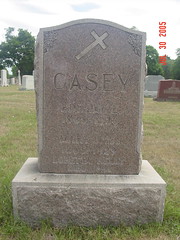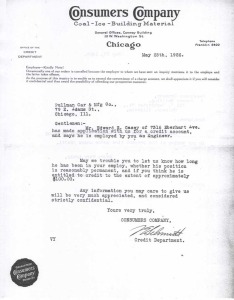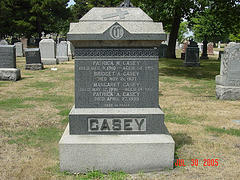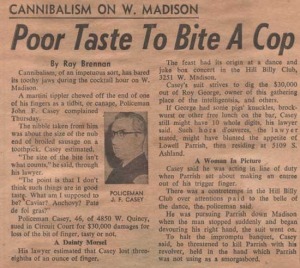Neighbors from WAY Back
 Two weeks ago I received the sort of email that can make any genealogist’s day. It read:
Two weeks ago I received the sort of email that can make any genealogist’s day. It read:
Hello – In researching my Guinane family, I came across your Casey information. My gr-gr-grandfather’s brother Thomas Guinane married Bridget O’Casey in Annagh, Murroe Parish on Feb. 21, 1846. Patrick Casey & William Casey are sponsors of 2 of their children. Does any of this match your info?
Nancy Peregrine on the Lost Coast of CA
There was so much familiar here, I knew there had to be a connection. Patrick & William are the names of the older brothers of my Great Great Grandfather Michael Casey, and all of them were born in Annagh, Murroe Parish, Limerick Ireland. Also, the name Guinane rang a bell to me. Looking up the information I had obtained two years ago from Limerick Ancestry, I found that William Casey had been sponsored by Thomas Guinane in 1847, and Patrick had been sponsored by Bridget Guinane in 1848.
Nancy and I have been swapping emails and letters, sharing information in our common hunt for ancestors in Annagh. Probably the most interesting new information for me came from a map Nancy had that showed the numbered lots of Annagh, as they corresponded to the lots that Griffith’s Valuation shows our ancestors to have lived on. By matching those numbers to my own map of Annagh, I produced the map displayed here, which shows where Michael Casey and Timothy Guinane lived.
Nancy has shared other helpful ideas with me that have open new routes to search. One clever idea was to search for Casey’s living in Murroe today by searching Eircom’s Online Phone directory (I heard back today from Murroe’s only listed Casey, no obvious family connection, but it’s always good to hear from a fellow Casey), and to try the Tipperary Family History Research Center for research assistance, since they have access to the church records of the Archdiocese of Cashel & Emily, which included the Parish of Murroe.
One of the nicest aspects of genealogy as a hobby is the shared enthusiasm of fellow family hunters, and typical eagerness to share information, both to help another, but also in hopes of learning something useful for your own research. I hope that some of the info I provided to Nancy was helpful to her, and I’ll look forward to sharing our future discoveries with each other. Although we live on opposite sides of the country, we share a common history leading back to a time when our families were neighbors, friends, and family to each other.
And if by chance, you have found this page as Nancy found me, by Googling our shared hometown of Annagh, or the surname she’s hunting, Guinane, I’m sure she’s love to hear from you, so feel free to write her at nancyperegrine@yahoo.com, I’m sure she’ll be as glad to hear from you as I was to hear from her.







